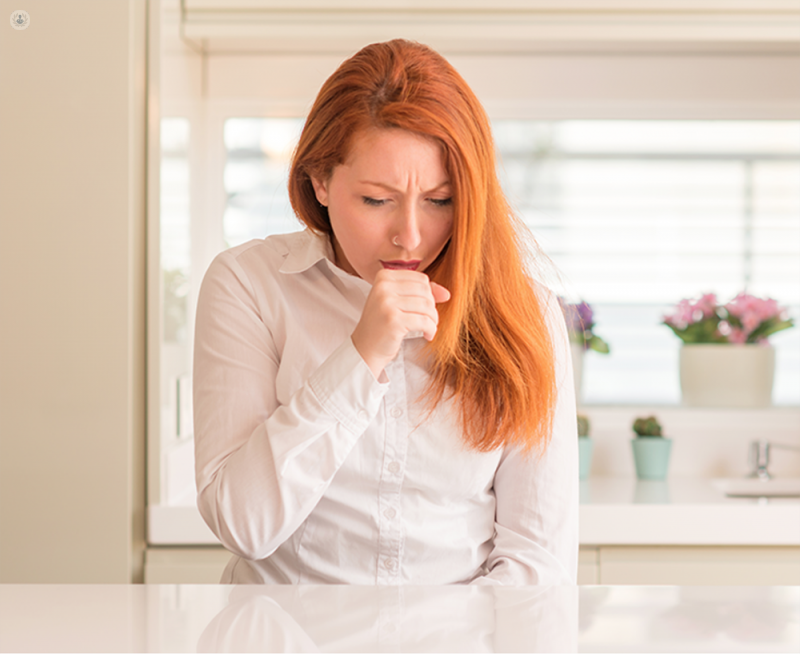Bronchiectasis symptoms causes how COVID affected treatment
Autore:According to key findings from the British Lung Foundation, the number of people with bronchiectasis is rising in the UK with some 212,000 thought to be affected. Of these cases, around 60% are patients in the over-70 age group.
We spoke to Dr John Chinegwundoh, a highly-experienced respiratory physician in London, to understand more about bronchiectasis, the signs and symptoms to look out for and how the coronavirus pandemic has affected patient’s treatment.

What is bronchiectasis?
Bronchiectasis is a lung condition that often goes on for many years before it is correctly diagnosed. It occurs when the tubes going into the lungs become damaged and permanently widened, thus making it difficult for them to stay clean and healthy. As a result, the tubes produce excessive amounts of mucus that can easily get infected and lead to serious chest infections.
What are the symptoms of bronchiectasis?
Unfortunately, the symptoms of bronchiectasis are often misdiagnosed as they can easily be confused with other conditions. The most common symptoms include:
- coughing
- daily wheezing
- chesty coughs
- longterm problems with your sinuses
- chest pain (pain around the lungs and rib cage)
- coughing up blood
It is important to note that chest pain is typically caused by mucus getting stuck in damaged tubes and causing inflammation in the adjacent lung lining.
If you have recurrent chest infections or you are experiencing some of the symptoms mentioned above, you must have a CT scan of your lungs and blood test done to work out the underlying cause. The earlier bronchiectasis is treated, the better it can be managed. If not, it can cause further damage to the bronchial tubes.
What causes bronchiectasis?
Bronchiectasis can be caused by repeated infections or another chronic condition; however, in over half of the known cases, the cause is not known. Bronchiectasis can be a complication of other conditions, such as:
- Childhood infections such as pneumonia, whooping cough and TB
- Immunodeficiencies
- Allergic bronchopulmonary aspergillosis
- Cystic fibrosis
- Connective tissue diseases
Is it similar to bronchitis or chronic obstructive pulmonary disease (COPD)?
It is easy to confuse these diseases as they all have similar symptoms. The diseases are related but there are different causes.
- Bronchiectasis is characterised as permanent damage to the bronchial tubes in the lungs caused by consistent inflammation and/or infections. Over time, it causes the airways to slowly lose their ability to clear our the excess mucus, putting pressure on your respiratory system and making you more prone to infections.
- Bronchitis can be either acute or chronic. Acute bronchitis is when the tubes going into the lungs become infected and produce excess mucus. You may also have a temperature. Antibiotics are often enough to clear up the infection. Chronic bronchitis, on the other hand, is a lifelong condition in which the tubes are in constant irritation.
- Most cases of chronic obstructive pulmonary disease (COPD) are linked to smoking, allergies, pollution and building dust. It is usually caused by constant irritation to the lungs.
Has bronchiectasis treatment been affected by the COVID-19 pandemic?
Overall, treatment hasn’t really been affected; however, one of the main treatments for bronchiectasis involves chest physiotherapy. Patients who received their diagnosis before the pandemic were already taught their chest exercises, but for newly diagnosed patients, there can be delays with appointments to learn them at the moment. People do have the choice, however, to be seen via video consultation.
On the plus side, people have more time to exercise at home at the moment as a lot of the population are working from home.
What should patients expect during a consultation at the moment?
Before your appointment, you will be telephoned to check you don’t have COVID-19 symptoms and to make sure you aren’t self-isolating. When you arrive at the hospital or clinic, you will have your temperature checked and asked the same questions again. If all is well, you can proceed with the face-to-face appointment.
If you are worried about any of the symptoms mentioned in this article, you can book an appointment with Dr John Chinegwundoh through his Top Doctors profile.


